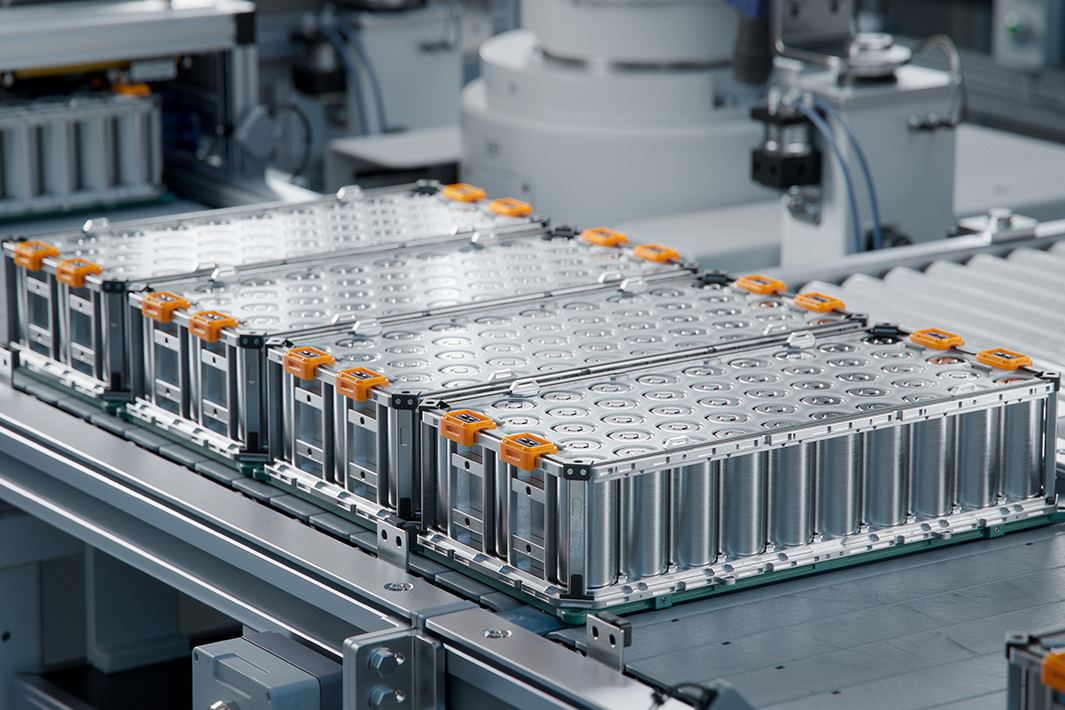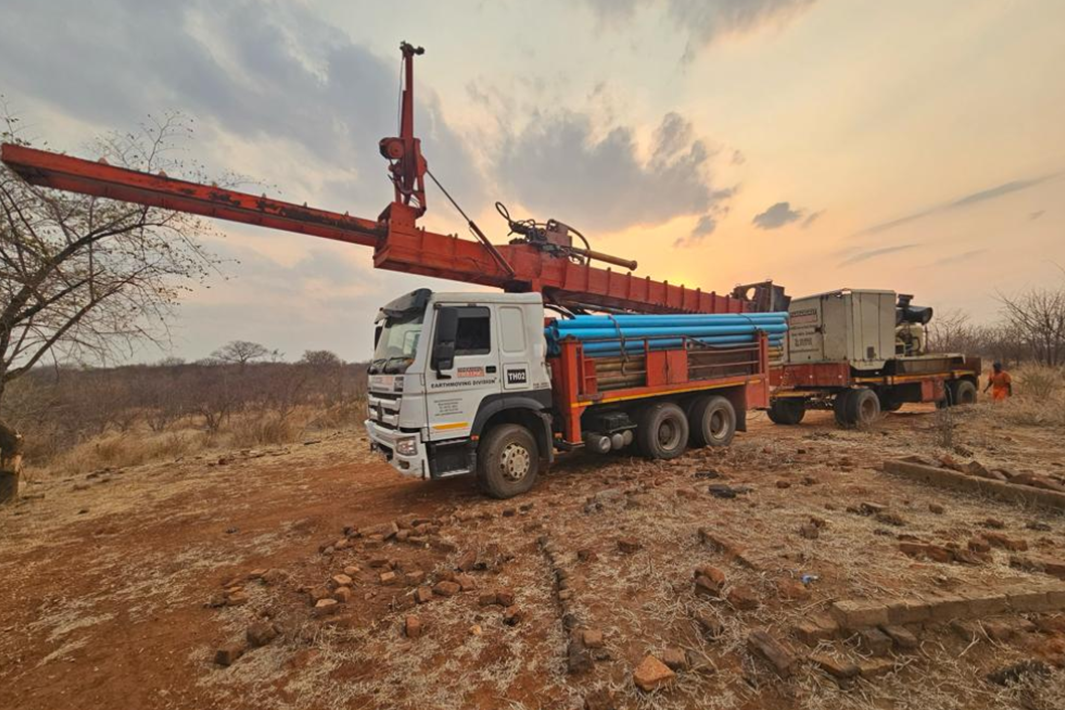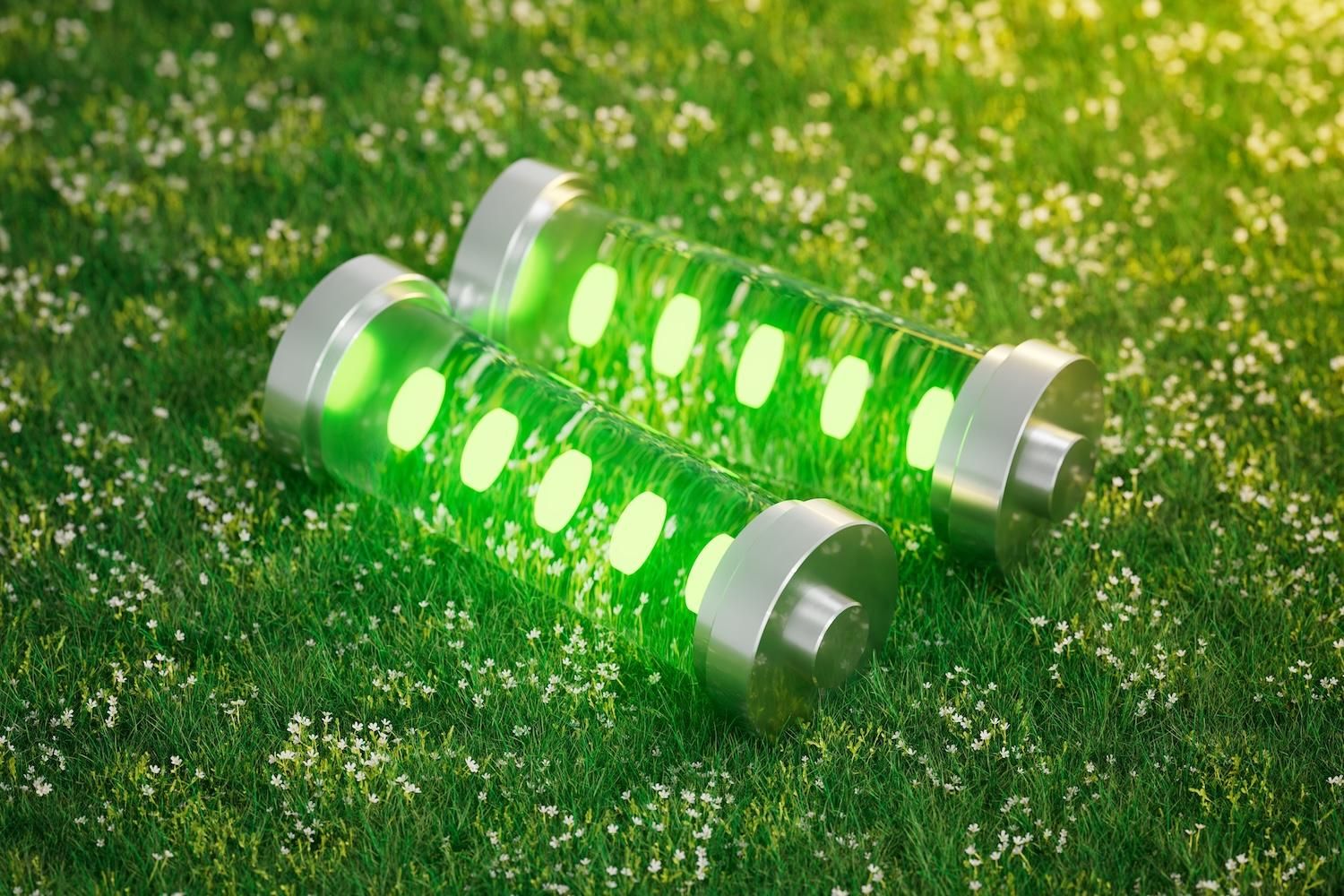
September 29, 2024
Lithium Universe Limited ("Lithium Universe" or the "Company," ASX: "LU7") is pleased to announce the results of its Preliminary Feasibility Study (PFS) for the Bécancour Lithium Carbonate Refinery in Québec, Canada. The PFS confirms the viability of a strong lithium conversion project, even within a below-average pricing environment. The Company plans to build a reliable, low-risk lithium conversion refinery with an annual capacity of up to 18,270 tonnes, utilizing proven expertise from the Jiangsu processing model. The facility will produce environmentally friendly, battery-grade lithium carbonate. The Company aims to establish a Canadian- based lithium chemicals business, purchasing spodumene feedstock from both domestic suppliers and international markets, including Brazil and Africa and producing a battery grade lithium carbonate product. This aligns with the Company’s broader vision of contributing to the North Atlantic lithium supply chain and closing the Lithium Conversion Gap.
Highlights
The Lithium Universe Strategy
- Positive, robust Bécancour Refinery PFS even in low pricing environment
- LU7 has a counter cyclical strategy – develop project, ready for price recovery
- Closing the Lithium Conversion Gap – growth in resource and end market projects
The Financial Modelling
- Economically viable with excellent pre-tax NPV8% of approximately US$779M
- IRR (pre-tax) of approximately 23.5% and payback of 3.5 years based on;
- Price forecast of US$1,170/t SC6 and US$20,970/t for battery grade Li2CO3
- Current spot price is approx. US$775/t SC6 and US$10,680/t for battery grade LC
- Operating costs at around US$3,976/tonne; capital cost estimate of US$494 million
- Expected annual revenue of approx US$383 million and EBITDA of around US$147 million
- Project break even at around US$780 /t (SC6) and around US$14,000 per tonne LC
The Design
- LU7 offers a solution to worldwide lithium conversion failures and startup problems
- Using proven Jiangsu Refinery operating technology and lithium industry experience
- Producing up to 18,270 tonnes/year of green battery-grade lithium carbonate
- Smaller off-the-shelf style plant rather than large difficult-to-operate facilities
- Initial focus on lithium carbonate production – feed for LFP batteries
- Assumptions based on real operating data and experience – not new aspirant
The Location
- Québec ideal trans-Atlantic lithium conversion centre, comparable to China
- Feedstock from Canada, Brazil and Africa – end market North America
- Critical cost benefits – cheap green power, transport mine/end market savings, US/Canada tariffs
- 95% GHG emission reduction with Hydro Québec's green energy
Next Steps
- Offtake discussions with interested OEMs underway
- LU7 continues to progress full Definitive Feasibility Study
CAUTIONARY STATEMENTS
Information Required by Listing Rules
The Bécancour Lithium Refinery Preliminary Feasibility Study (PFS) does not rely upon estimated ore reserves / and or mineral resources. The spodumene concentrate feedstock for the proposed refinery has been assumed to have been purchased directly from spodumene miners currently producing spodumene concentrates or marketing agents or traders currently purchasing spodumene concentrate and selling to the downstream processors. Accordingly, the JORC Code is not relevant to this study nor are Listing Rules 5.16 and 5.17 to the extent to which they relate to matters concerning JORC.
Forward Looking Statements
This release contains “forward-looking information” that is based on the Company’s expectations, estimates and projections as of the date on which the statements were made. This forward-looking information includes, among other things, statements with respect to studies, the Company’s business strategy, plan, development, objectives, performance, outlook, growth, cash flow, projections, targets and expectations. Generally, this forward looking information can be identified by the use of forward-looking terminology such as ‘outlook’, ‘anticipate’, ‘project’, ‘target’, ‘likely’,’ believe’, ’estimate’, ‘expect’, ’intend’, ’may’, ’would’, ’could’, ’should’, ’scheduled’, ’will’, ’plan’, ’forecast’, ’evolve’ and similar expressions. Persons reading this news release are cautioned that such statements are only predictions, and that the Company’s actual future results or performance may be materially different. Forward-looking information is subject to known and unknown risks, uncertainties and other factors that may cause the Company’s actual results, level of activity, performance or achievements to be materially different from those expressed or implied by such forward-looking information. Forward-looking information is developed based on assumptions about such risks, uncertainties and other factors set out herein, including but not limited to general business, economic, competitive, political and social uncertainties; the actual results of current development activities; conclusions of economic evaluations; changes in project parameters as plans continue to be refined; future prices of metals; failure of plant, equipment or processes to operate as anticipated; accident, labour disputes and other risks of the chemical industry; and delays in obtaining governmental approvals or financing or in the completion of development or construction activities. This list is not exhaustive of the factors that may affect our forward-looking information. These and other factors should be considered carefully, and readers should not place undue reliance on such forward-looking information. Neither the Company, nor any other person, gives any representation, warranty, assurance or guarantee that the occurrence of the events expressed or implied in any forward-looking statement will actually occur. Except as required by law, and only to the extent so required, none of the Company, its subsidiaries or its or their directors, officers, employees, advisors or agents or any other person shall in any way be liable to any person or body for any loss, claim, demand, damages, costs or expenses of whatever nature arising in any way out of, or in connection with, the information contained in this document. The Company disclaims any intent or obligations to or revise any forward-looking statements whether as a result of new information, estimates, or options, future events or results or otherwise, unless required to do so by law.
Cautionary Statement
The PFS is based on the material assumptions outlined including that it has been completed in accordance with AACE Principles to a Class 5 level with a nominal level of accuracy of ± 35%, that the financial forecasts rely upon the purchase of third party spodumene concentrate as the feedstock for the plant. The PFS referred to in this announcement has been undertaken to assess the potential technical feasibility and economic viability of constructing and operating facilities capable of producing battery grade lithium carbonate for use in lithium-ion batteries from those units of operations and provide baseline financial metrics to consider future investment decisions.
The Preliminary Feasibility Study (PFS) is based on the material assumptions outlined below. These include assumptions about the availability of funding. While Lithium Universe considers all of the material assumptions to be based on reasonable grounds, there is no certainty that they will prove to be correct or that the range of outcomes indicated by the PFS will be achieved. To achieve the range of outcomes indicated in the PFS, funding of in the order of US$500 million will likely be required. Investors should note that there is no certainty that Lithium Universe will be able to raise that amount of funding when needed. It is also likely that such funding may only be available on terms that may be dilutive to or otherwise affect the value of Lithium Universe’s existing shares. It is also possible that Lithium Universe could pursue other ‘value realisation’ strategies such as a sale, partial sale or joint venture of the project. If it does, this could materially reduce the Company’s proportionate ownership of the project. Given the uncertainties involved, investors should not make any investment decisions based solely on the results of the PFS
The project’s economics are highly favourable, even with conservative price assumptions. The refinery is economically viable with a pre-tax Net Present Value (NPV) of approximately US$779 million, using an 8% discount rate, and a pre-tax Internal Rate of Return (IRR) of around 23.5%. The payback period is estimated at 3.5 years. The financial model is built on cautious price forecasts of US$1,170 per tonne for spodumene concentrate (SC6) and US$20,970 per tonne for battery-grade lithium carbonate equivalent (LCE). LU7’s directors believe they have a reasonable basis for using the assumed price in the study of US$20,970 per tonne for battery grade lithium carbonate. Key operational assumptions include 86% plant availability and 88% lithium recovery. At full production capacity, the project is expected to generate approximately US$383 million in annual revenue, with costs totalling around US$236 million, leading to an annual EBITDA of approximately US$147 million and a gross margin of in the region of 38%. Post-tax, the NPV at an 8% discount rate is estimated at approximately US$501 million. The capital cost for the project is estimated at US$494 million, which includes a contingency of US$68 million. The capital cost estimate is based on advanced design specifications from the Jiangsu Lithium Refinery model, ensuring robust financial planning and projection. These factors highlight the project's strong financial viability, even under conservative pricing conditions.
MANAGEMENT COMMENT
Lithium Universe Chairman, Iggy Tan said "The successful completion of our Preliminary Feasibility Study is a significant milestone for the company, especially given that we only launched in August of last year. Early on, we recognized that bridging the lithium conversion gap in North America, leveraging our accumulated lithium expertise and the proven technology from Jiangsu, was a clear and strategic path forward.”
“Our counter-cyclical strategy is centered on advancing projects during market downturns, allowing us to strategically position ourselves for growth as the market rebounds. We are dedicated to funding and constructing a proven, low-risk lithium conversion refinery in Québec, marking the first step toward establishing Québec as the lithium conversion hub for the Transatlantic region."
“The strong NPV and returns for the project indicate an economically viable project. We will be looking to secure strategic partners at the project level to help fund the project. There is significant interest from OEMs with spodumene offtake supply seeking conversion outside of China, and discussions are already underway. We are confident that the Bécancour lithium refinery, with an annual capacity of 18,270 tonnes, will emerge as a leader in producing green, battery-grade lithium carbonate."
“The Company will advance quickly to complete a Definitive Feasibility Study and finalise offtake partnerships”
Click here for the full ASX Release
This article includes content from Lithium Universe, licensed for the purpose of publishing on Investing News Australia. This article does not constitute financial product advice. It is your responsibility to perform proper due diligence before acting upon any information provided here. Please refer to our full disclaimer here.
LU7:AU
The Conversation (0)
03 September
Macquarie Electro Jet Silver Extraction Recovery
Lithium Universe (LU7:AU) has announced Macquarie Electro Jet Silver Extraction RecoveryDownload the PDF here. Keep Reading...
12 August
Acquisition of Silver Extraction Technology
Lithium Universe (LU7:AU) has announced Acquisition of Silver Extraction TechnologyDownload the PDF here. Keep Reading...
30 July
Quarterly Activities/Appendix 5B Cash Flow Report
Lithium Universe (LU7:AU) has announced Quarterly Activities/Appendix 5B Cash Flow ReportDownload the PDF here. Keep Reading...
30 July
Lithium Universe Ltd Quarterly Activities Report
Melbourne, Australia (ABN Newswire) - During the June quarter, Lithium Universe Ltd (ASX:LU7,OTC:LUVSF) (FRA:KU00) (OTCMKTS:LUVSF) announced the acquisition of the global rights to commercially exploit a patented photovoltaic solar panel recycling technology known as "Microwave Joule Heating... Keep Reading...
17 July
Completion of PV Solar Cell Recycling Acquisition
Lithium Universe (LU7:AU) has announced Completion of PV Solar Cell Recycling AcquisitionDownload the PDF here. Keep Reading...
11 December
Mining the Gap: 5 Forces Shaping North America’s Lithium Supply Chain
A convergence of industry investments, government initiatives and a shifting global trade dynamic is creating an environment ripe for the development of a North American battery supply chain, with lithium playing a leading role. These trends are reshaping the region’s industrial base and opening... Keep Reading...
10 December
Rock Bottom: Strategic Window for Ground-level Lithium Investment
When lithium prices hit bottom, savvy investors know that’s exactly where the next big discovery begins — literally. Beneath the surface of global markets and remote exploration grounds, new opportunities are forming in the wake of a sharp price reset and renewed geopolitical urgency.Recent... Keep Reading...
10 December
Liontown Resources Pens Lithium Offtake Agreement with China's Canmax
Liontown Resources (ASX:LTR,OTC Pink:LINRF) has executed a binding offtake agreement with Chinese conglomerate Canmax Technologies (SZSE:300390) as part of its strategy to diversify its customer base.“Listed on the Shenzhen Stock Exchange, Canmax is one of the world’s leading manufacturers of... Keep Reading...
08 December
Trading Halt
Jindalee Lithium (JLL:AU) has announced Trading HaltDownload the PDF here. Keep Reading...
05 December
Livium Receives A$663k in RsD Tax Incentive Rebates for VSPC
Livium Ltd (ASX: LIT) (“Livium” or the “Company”) advises that it has received A$663,000 in research and development ("R&D") tax incentive rebates from the Australian Tax Office for the 2025 financial year ("FY25"), relating to its wholly owned subsidiary VSPC Pty Limited ("VSPC"). The rebate... Keep Reading...
01 December
Why SQM Says Social Dialogue is Key to Sustainable Lithium
As scrutiny continues to intensify across the battery metals supply chain, the conversation around sustainability has moved far beyond carbon footprints. At this year’s Benchmark Week, Stefan Debruyne, director of external affairs at Sociedad Quimica y Minera de Chile (SQM) (NYSE:SQM), made that... Keep Reading...
Latest News
Interactive Chart
Latest Press Releases
Nevada Sunrise Announces Stock Option Grants
19 December
Related News
TOP STOCKS
American Battery4.030.24
Aion Therapeutic0.10-0.01
Cybin Corp2.140.00






